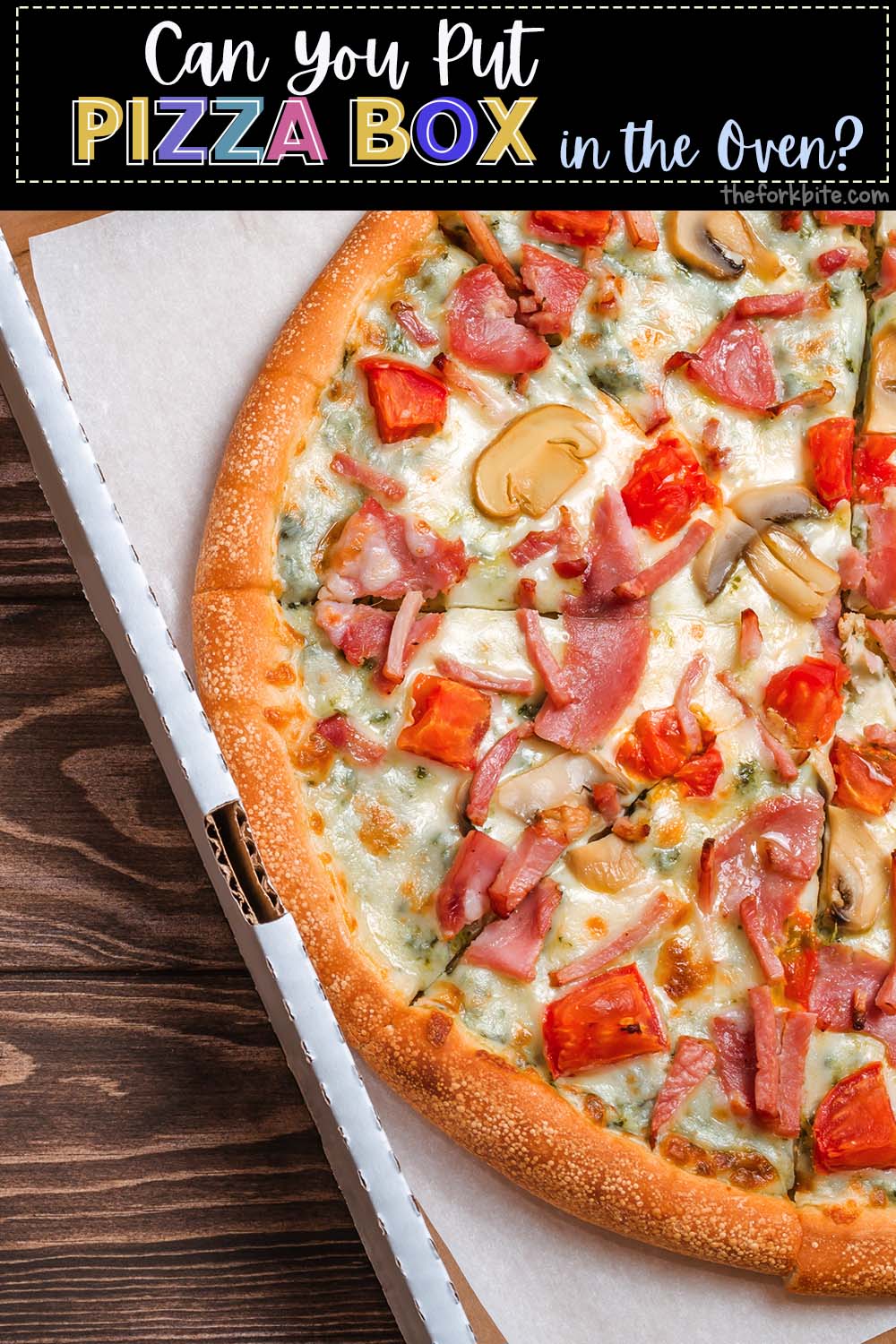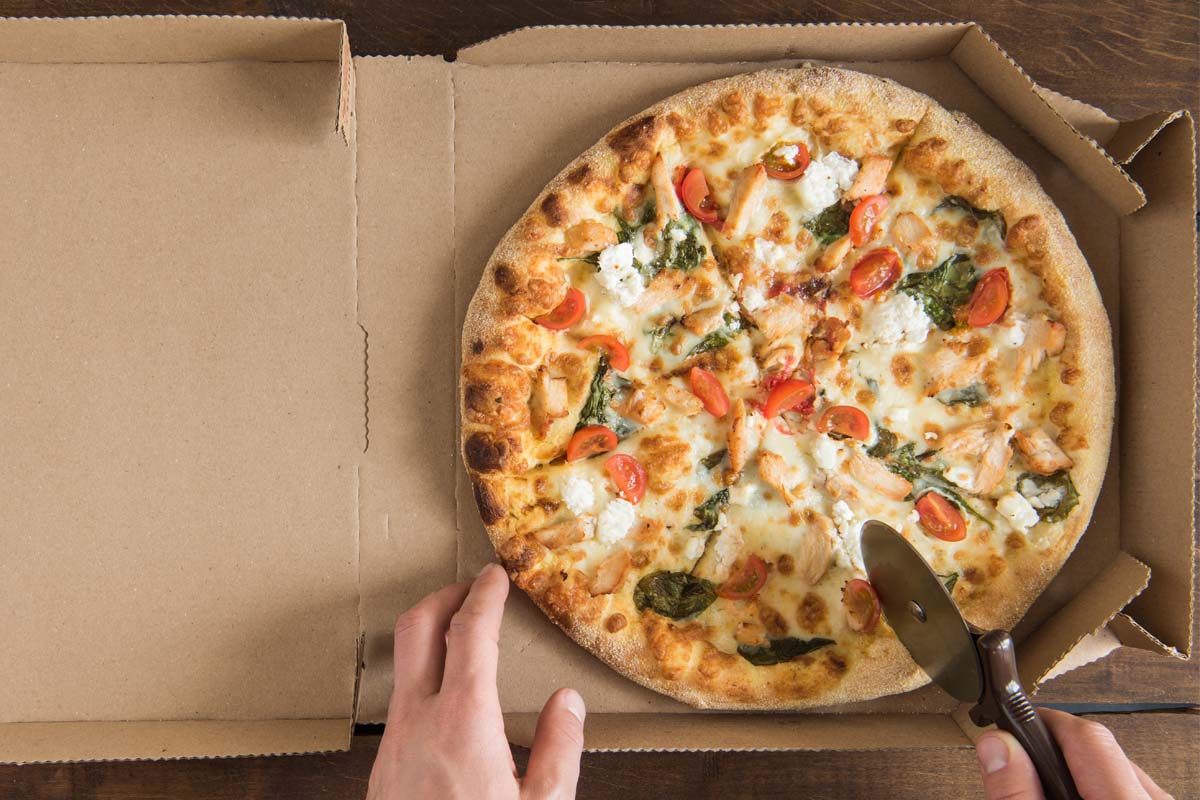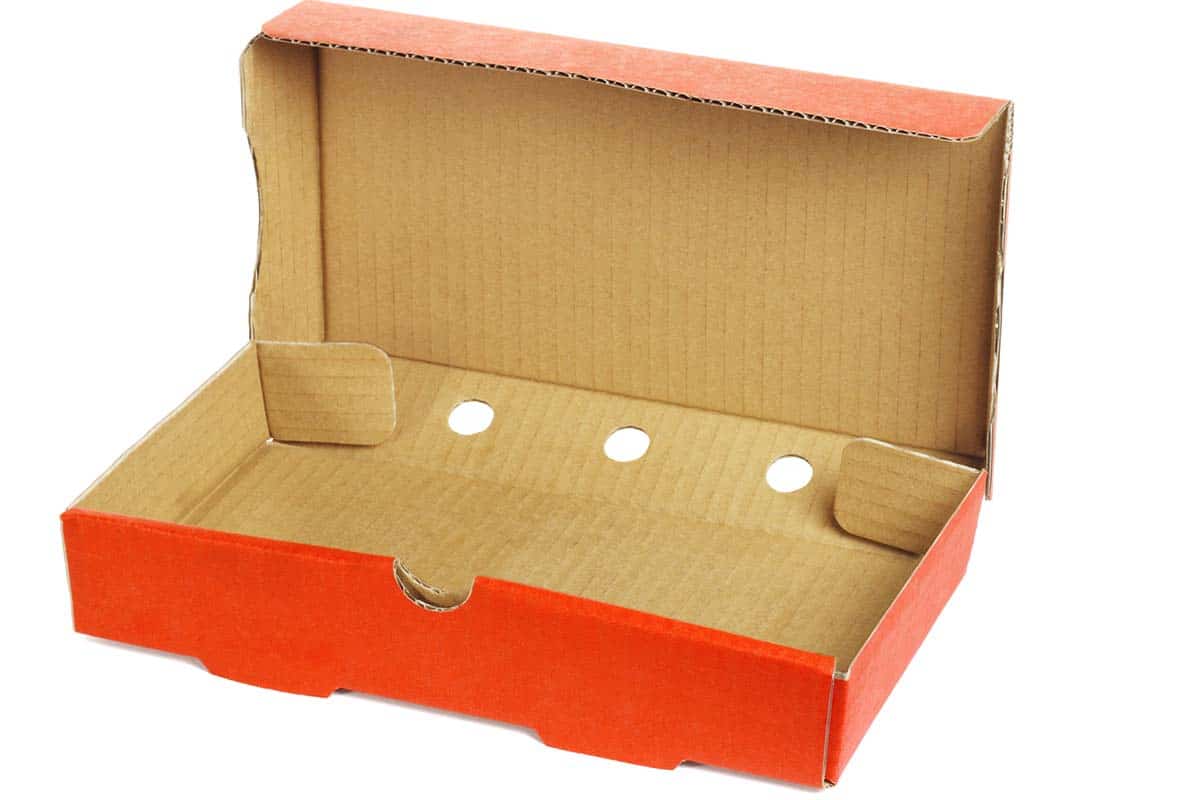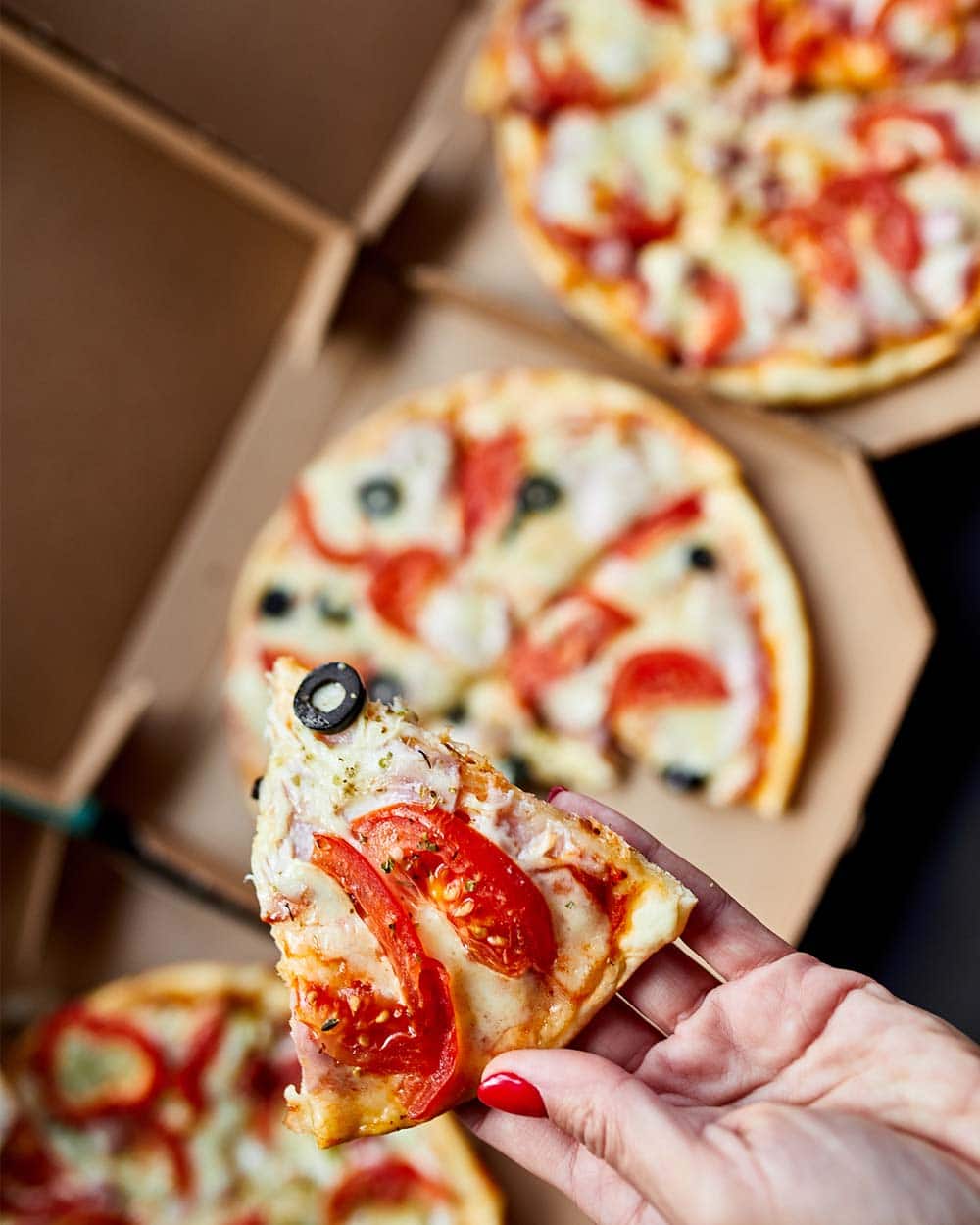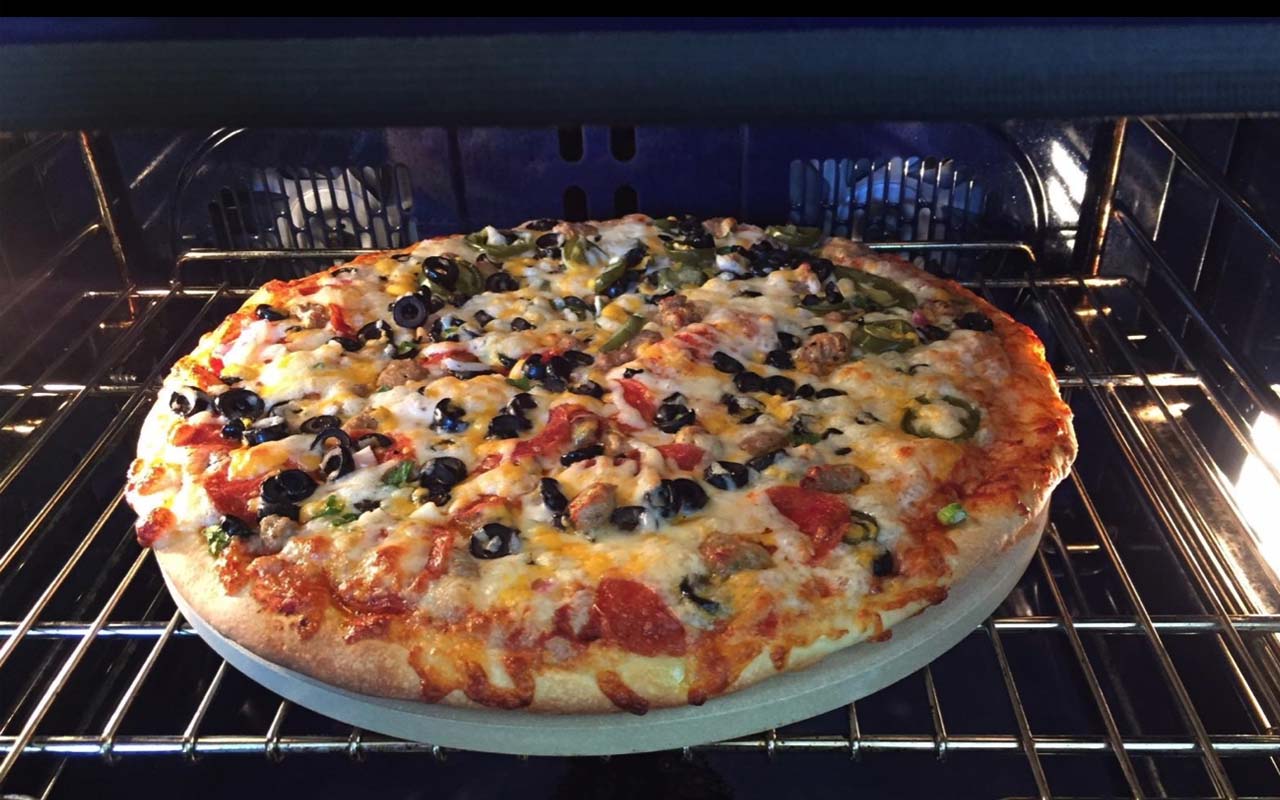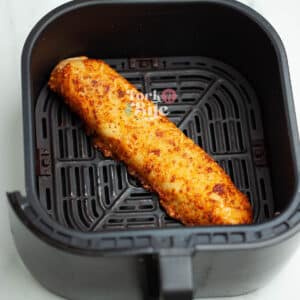Can you put a pizza box in the oven? The quick answer is, you shouldn't do it because apart from the fire risk, the pizza can take on a taste-hint of cardboard.
Take-out pizza has got to be just about my favorite fast-food take-out. The problem is that by the time I get it home, if I collected it, or it is home-delivered, it's only lukewarm.
And although I have been known to eat cold pizza the next day (don't tell anyone), I like my pizza hot. So I do what we all do, I guess. I warm it up in the oven.
The early Domino's promise
America's favorite pizza chain is Domino's. The chain was first founded by the Monaghan brothers Tom and James back in 1960 in Ypsilanti, Michelin.
They bought an existing pizzeria called DomiNick's for the princely sum of $1400 and spent the next five years growing that chain until, in 1965, they had three locations. That's from where the three spots on the Domino's logo come.
By 1978 the chain had grown to 200 sites, and by 1983 there were 1000 locations. Today, there are over 11,900 sites in more than 70 countries worldwide, delivering a combined total of 1.5 million pizzas per day. That's a lot of pizzas.
The secret to the brothers' early success was their early 30-minute delivery promise and a special type of insulated pizza box invented by Tom.
It was stackable but not easily crushable, which leads me nicely into my next question.
Is it wise to warm up a pizza in your oven than when it's still in its delivery box?
Does the pizza box fit?
Assuming that you can fit the pizza box into the oven, you need to think about the temperature setting.
After all, you don't want to set the box on fire. I've heard of barbecue pizza, but setting it alight in the oven is going a little bit too far, don't you think?
So you need to take care. After all, a pizza box is made out of cardboard, and like it or not, that is relatively easily combustible.
How about the temperature?
The cardboard that the boxes are made from is fairly thin and often has a parchment lining.
So if you set your oven temperature too high, you could be calling out the fire brigade. The auto-ignition point of paper/cardboard (where it will burn) is around 450°F.
Even if you don't set the box afire, you could still end up with a charred and burnt pizza.
You have to bear in mind that pizzerias only put their pizzas into delivery boxes to send them out. They don't cook the pizzas in them.
What's with the cardboard?
Of course, most pizza delivery boxes are not just cardboard. The material they use is dyed with inks and often has stickers attached to them.
Then, the bottom of the box, on which the pizza sits, is treated with an anti-grease layer. All these things have to be considered.
The longer you leave your pizza in the oven in its box, and the higher the heat, the box will eventually begin to melt and possibly leach harmful chemicals into the pizza itself, even if the box doesn't set itself on fire.
I don't know about you, but I don't fancy eating a pizza that is absorbed any paints or dyes or anti-grease chemicals. It wouldn't just make the taste; it could make you ill as well.
Why put a pizza box in the oven in the first place?
People tend to reheat their home-delivered or take-out pizza in the oven in its box because they believe it will help protect the structure of the pizza.
We want the pizza crust to be as crunchy as it was when it came out of the oven, the cheese to be nice and stringy, and the toppings to be as fresh as possible.
None of that will happen when the pizza cools down too much, so to make it warmer and hopefully refresh it, in the oven, it goes.
The idea behind the pizza box
The idea behind the pizza box is to protect the integrity of the pizza inside it. Because it is a near-perfect fit, it minimizes any movement.
It not only stops the pizza from flipping over and spoiling the toppings, but it also prevents it from sliding around too much, which would cause it to lose some heat, as long, of course, as the box is stored flat, and the right way up.
The box is also designed to make it easy to slide its precious content out onto a warming stone or be used as a makeshift cutting board.
1 The lay-flat design
I don't know if you've ever noticed, but pizzerias store the yet to be used boxes, flat, in stacks, thanks to their lay-flat construction.
They only assemble them as they use them, so stacking them flat helps conserve storage space and keeps them readily accessible.
2 It's cheaper
So, cardboard is perfect for the job, being cheap, light, yet strong. There is no health concern from the pizzeria's perspective because it is only a tool for delivering, not heating.
3 Keeping pizza crust lightly crispy
The great thing about pizza is its flexibility. There are so many topping variations from which to choose.
Taking the Domino's menu as an example. You can get:
- Cali Chicken Bacon Ranch
- Cheeseburger
- ExtravaganZZa
- MeatZZa
- Honolulu Hawaii
- Spinach and Feta
- Ultimate Pepperoni
- Many more
The list goes on, and of course, you can order whatever extra toppings you like. But it's not just the amazing toppings. Where would a pizza be without its base? In a soggy mess on the floor - that's where!
No, but seriously the crust is as crucial as the toppings, and the word "crust" says it all. It needs to be light, crunchy, yet fluffy. You can choose from Brookly Style, Crunchy Thin Crust, Gluten Free, Hand Tossed, and Handmade Pan.
Sizewise, you can get 10, 12, or 14 inches. The 14-inch is great for sharing if you're feeling magnanimous, of course.
But whichever type of base you order, it has to have a little crunch about it, and that's why the boxes must not be airtight.
If they were, the steam would build up inside and, after a while - soggy pizza.
That's exactly why the boxes are pre-perforated so you can vent the box and let the air circulate. The ply construction of the boxes means that the holes don't weaken them.
4 To keep pizza as good as possible
They now make pizza boxes from laminated metalized cardboard, but there will always be a play-off between retaining the heat and keeping the pizza base crusty.
Many pizzerias do not use metalized cardboard; it's not just the worry about sogginess. Non-metalized cardboard is cheaper.
Read: 9 Ways How to Keep Pizza Warm
Can you put a pizza box in the oven?
To be fair, many people don't think twice about reheating pizza in its delivery box. They just get on with it.
But it's not just about the fire risk; there are other considerations to be taken into account too.
When the Culinary Director of GoodHouseKeeping, Susan Westmoreland, was asked the question, here's what she said about warming pizza up in its box.
She said that you shouldn't do it because apart from the fire risk, the pizza can take on a taste-hint of cardboard.
Gently Does It
Okay, but despite what Susan says, many people are going to do it anyway. So if you are one of these folks, here is what you ought to do.
Step by step instructions
Step 1
Preheat your oven to a setting of between 275°F to 300°F. Once you get it to the right temperature, allow your oven to maintain it there. You don't want it to get any hotter.
Step 2
Position the shelf on the second-highest location, around the center of the oven heightwise. Slide the pizza (still in its box) onto the shelf and warm for around 10 to 15 minutes. Don't neglect it. Check it every few minutes to ensure it is not getting burnt.
Step 3
When you see the cheese beginning to bubble, it means your pizza is ready. Take it out and enjoy.
Note: Reheating a pizza in its box usually means there will always be a hint of cardboard in the taste, small though it might be. To avoid it altogether, ditch the box.
Reheating pizza without its box
You can successfully reheat your pizza without its box, but you need to follow one of the following options for the best results.
1 Using a Pizza Stone
Pizza stones are designed primarily for cooking pizza from scratch. They help give a pizza base its lovely crispy exterior while maintaining a light, fluffy, bread-like interior.
They are made in different materials. Here is a list of the 15 best stones in 2020 according to the slicepizzeria.com website.
A stone will help give any pizza great flavor, and it works just as well for reheating pizza. It gives it that "just bought" texture.
I find that pizza stones made from ceramic or clay seem to give you the best results. The big advantage with these tools is that their porous surface means they heat the pizza nice and evenly.
2 Using Your Oven Rack
All full-size kitchen ovens have racks in them, and there is nothing to stop you from placing your naked pizza straight onto the rack; in fact, it's good because it gives the warm air the best chance of circulating.
Just don't position the rack at the top of the oven as that's where it is hottest, and it's likely to burn the pizza.
You can, if you want, position a tray on the rack below the pizza to catch any crumbs, or God forbid, toppings that go astray.
It means your oven will be easier to clean. Observe the temperature setting I recommended above.
3 Using a Pizza Pan
Using a pizza pan is another option. You get them in various types and made from different materials. Here are 10 of the best, according to the kitchenfold.com website.
I find that the ones with perforated bottoms help to give or retain a pizza's crispy crust.
The only thing to watch out for is that a bit of grease might drop from the pizza, so I always set a tray on the rack below to catch it. I'm all for keeping oven cleaning to a minimum.
The other thing the perforations are good for is air circulation. It means that the pizza warms quicker, and the base gets a little crisper than if you use a pizza pan with a closed bottom.
If you're not into crispy crusts, then an unperforated pan is the one for you.
4 Using Aluminum Foil
Using aluminum foil serves a double purpose.
- Firstly, you can use it as a baking sheet, albeit a flimsy one, but okay if handled with care.
- Secondly, it can save on having to clean your oven or baking tray, something that the reader will recognize as being close to my heart, plus it's so cheap you can dispose of it when you've finished.
The only downside with using aluminum foil is that the air can't circulate beneath the pizza, so the base loses any crispness.
The warmth preserving capabilities of aluminum foil
Aluminum foil is made from aluminum - surprise, surprise. Its reflective properties work as a barrier to both light and oxygen.
This means that it reflects energy back into the food, preserving its aroma, moisture, and heat. It's one of the best cooking aids going and so useful for keeping food warm.
However, there is a limit to how long you should keep food warm from a food safety point of view.
Preventing bacteria from multiplying
No perishable food (including pizza) should be kept out at room temperature for more than two hours maximum when the temperature drops to 45°F - hello, bacteria!
Of course, you can't see the little devils with the naked eye, but they will be there - botulinum, listeria, staph - all the little nasties that can lead to food poisoning.
If the temperature is going to drop to 45 or less, refrigerate it before it does so.
Give the foil helps to hold the heat
Foil on its own is okay for a short while, but if you want to extend how long you hope to keep the food warm, give the foil some help.
A layer or three of plastic film will help, as well as a thick plastic bag; they all boost insulation.
Other ideas
If you have any, you can always use insulated plastic containers. Also, don't forget about your ice cooler box if you have one.
At the end of the day, it's an insulated box and will work just as well to keep heat in as it will cold.
You can boost its heat retaining ability by putting heated, towel-wrapped bricks, or heat packs inside it.
Interesting posts
- Reheating Pizza in Air Fryer
- Best Way to Reheat Deep Dish Pizza
- Waffled Pizza Fries
- Beef Tacos Pizza Rollups
Frequently asked questions
The most important thing with keeping food warm in your oven is not to have the temperature set too high.
If it’s set at 300°F to 350°F, any food will continue to cook and will get overcooked and dry out.
But if you turn your oven down as low as it will go – that’s about 170°F on my oven, with the door closed, food will stay warm in there for a long time.
It’s easier and cheaper to manufacture boxes square rather than round, but it also makes sense from an assembly point of view. Round boxes would be so much harder to build up.
If boxes are airtight, they will retain the steam, making the contents of the box soggy.
I don’t know about you, but I’m not a fan of soggy pizza. I like my pizza crusts to have a crispy outer and a fluffy, bread-like inner.
Having read through my article, I guess you now know the answer to this.
It’s okay to reheat pizza in its box in your oven, providing you use the right temperature setting as discussed above.
However, you are likely to get a hint of cardboard in the taste.
Can you put a pizza box in the oven (How-to)
Pin RecipeEquipments:
- Oven
Ingredients:
- pizza
Instructions:
- Preheat your oven to a setting of between 275°F to 300°F. Once you get it to the right temperature, allow your oven to maintain it there. You don’t want it to get any hotter.
- Position the shelf on the second-highest location, around the center of the oven heightwise. Slide the pizza (still in its box) onto the shelf and warm for around 10 to 15 minutes. Don’t neglect it. Check it every few minutes to ensure it is not getting burnt.
- When you see the cheese beginning to bubble, it means your pizza is ready. Take it out and enjoy.Note: Reheating a pizza in its box usually means there will always be a hint of cardboard in the taste, small though it might be. To avoid it altogether, ditch the box.
Notes:
Reheating pizza without its box
You can successfully reheat your pizza without its box, but you need to follow one of the following options for the best results.1 using a pizza stone
Pizza stones are designed primarily for cooking pizza from scratch. They help give a pizza base its lovely crispy exterior while maintaining a light, fluffy, bread-like interior. They are made in different materials. A stone will help give any pizza great flavor, and it works just as well for reheating pizza. It gives it that “just bought” texture. I find that pizza stones made from ceramic or clay seem to give you the best results. The big advantage with these tools is that their porous surface means they heat the pizza nice and evenly.2 using your oven rack
All full-size kitchen ovens have racks in them, and there is nothing to stop you from placing your naked pizza straight onto the rack; in fact, it’s good because it gives the warm air the best chance of circulating. Just don’t position the rack at the top of the oven as that’s where it is hottest, and it’s likely to burn the pizza. You can, if you want, position a tray on the rack below the pizza to catch any crumbs, or God forbid, toppings that go astray. It means your oven will be easier to clean. Observe the temperature setting I recommended above.3 using a pizza pan
Using a pizza pan is another option. You get them in various types and made from different materials. I find that the ones with perforated bottoms help to give or retain a pizza’s crispy crust. The only thing to watch out for is that a bit of grease might drop from the pizza, so I always set a tray on the rack below to catch it. I’m all for keeping oven cleaning to a minimum. The other thing the perforations are good for is air circulation. It means that the pizza warms quicker, and the base gets a little crisper than if you use a pizza pan with a closed bottom. If you’re not into crispy crusts, then an unperforated pan is the one for you.4 using aluminum foil
Using aluminum foil serves a double purpose.- Firstly, you can use it as a baking sheet, albeit a flimsy one, but okay if handled with care.
- Secondly, it can save on having to clean your oven or baking tray, something that the reader will recognize as being close to my heart, plus it’s so cheap you can dispose of it when you’ve finished.
Please note that all nutrition information are just estimates. Values will vary among brands, so we encourage you to calculate these on your own for most accurate results.

